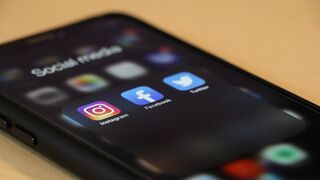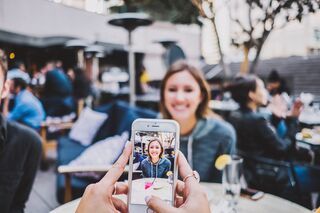Media
Why Mimetic Desire is Key to Understanding Social Media
How does social media change what (and how) we desire? Luke Burgis weighs in.
Posted August 3, 2021 Reviewed by Devon Frye
Key points
- "The Mimetic Theory of Desire" was first proposed by René Girard. It posits that desire is fundamentally social: We want what other people want.
- Mimetic rivalry has always existed. As author Luke Burgis argues, however, social media has galvanized these tendencies.
- According to Burgis, these trends are accelerated by the homogenizing nature of social media, along with a lack of shared role models in society.
Desires come in all shapes and sizes. Some of us want fancy cars above all else, while others could care less what they drive but desperately want their start-up to succeed. Other people want neither but instead aspire to "The American Dream," with a life in the suburbs and a white picket fence.
But where do each of these desires come from? Once we have our basic needs met, where do we go from there? At first blush, this seems obvious: We just want them. From the perspective of our subjectivity, these desires are simply there. But where did they originate?
One compelling idea comes from René Girard's "Mimetic Theory of Desire." It posits that desire is fundamentally social: We want what other people want. From the most prominent celebrities to our own family members, people themselves become models for what to desire.
Mimetic desire is the central subject of Luke Burgis' newest book, Wanting: The Power of Mimetic Desire in Everyday Life. It provides a fascinating window into the psychology of desire, Girard's philosophy, and how it plays out in the modern world. In this interview, I speak with Luke about mimetic desire and its unexpected role in our lives. We discuss the ways in which mimesis plays out in culture and, in particular, on social media.
MJ: You talk a lot about mimetic rivalry—the idea that people compete off of one another to an often unhealthy extent. The book hints at the idea that mimetic rivalry is on the rise. Why do you think that is?
LB: We definitely seem to have a lack of shared models in the culture. It's hard to think of a person who is held up and revered by both the left and the right—somebody just universally admired. I tweeted about this a while ago, and the only answer I got was "Dolly Parton." That tells you where we're at as a culture! (I'm not even sure if that's true that Dolly is). There might be a couple of other people, but examples of positive models are few and far between.

This also relates to the collapse of traditional hierarchies. As we become more secular, I think we've found ourselves in a weird transition. People are left asking themselves, "What are our shared truths?"
It has created a situation that I talked about in chapter three of the book, about Zappos. They eliminated most of the external hierarchy and adopted a flat management philosophy. It became a hotbed for mimetic rivalry. There's a lot of things that I left unsaid in the book, but what I was hoping readers would see in the Zappos story is an analogy for what may be happening in a broader context right on a societal level.
MJ: This seems to be exacerbated with social media, and the fragmented media landscape more generally. How do you feel this context relates to mimetic rivalry?
LB: The traditional media landscape is indeed becoming completely fractured. I'm seeing people leaving traditional institutions and forming micro-communities on platforms like Substack. And I'm not quite sure where that ends, you know? If everybody just finds a little tribe, I could see this producing a lot more mimetic rivalry.

Another major factor accelerating mimetic rivalry is social media. I know that with social media a lot is going on neurologically. Some of the user experience—notifications, scrolling incentives, suggested friends or follows—is built with the express intention of triggering certain physiological responses like dopamine release. A lot is happening there—things you know much more about than I do. But what I don't see a lot of people speaking about is what's happening socially. What is it doing to our desires? We need to probe this beyond the materialist perspective alone. The root problem cuts down to the sociological aspects—you could even say the spiritual elements—of the platforms.
MJ: You've written that social media tends to commodify people, making us all look the same. Could you elaborate on that?
LB: Social media has a homogenizing function. It's built right into the design of the platforms. One simple example is that our profiles all look exactly the same (I guess MySpace was the anti-mimetic social platform in this regard, but it has now gone to social media heaven.)

The homogenization causes what René Girard would refer to as a "crisis of sameness." The platforms have forced everybody—socially and existentially speaking—closer together. They have fit all of the world's relationships onto the head of a pin. We're all like "neighbors" to one another now. And this creates the conditions, potentially, for a mimetic crisis of vast proportions, where everybody is now trying to differentiate themselves from everybody else. It's what Freud would call the "narcissism of small differences." Narcissism certainly seems to be on the rise, and social media is fueling it—but not necessarily for the reasons people think. "Selfies" seem like a narcissist act; but if that's all we see, we're missing some structure about the platforms themselves.
Relationships are very hazy and unclear. Who's imitating who? Who are the models, and who are the imitators? It's become very ambiguous. When people start tweeting back and forth, who initiated it? Who's really imitating who? This is like an entirely new social dynamic. This is an example of the situation I describe in the book as "Freshmanistan."
I absolutely think social media is exacerbating a lot of the social anxiety that was already there. It's not like mimetic rivalry didn't exist before—it's at the heart of human relations, according to Girard. Social media has accelerated it.
This post also appears on the marketing psychology blog, MattJohnsonIsMe
References
Burgis, L. (2021) Wanting: The Power of Mimetic Desire in Everyday Life, St. Martin's Press




